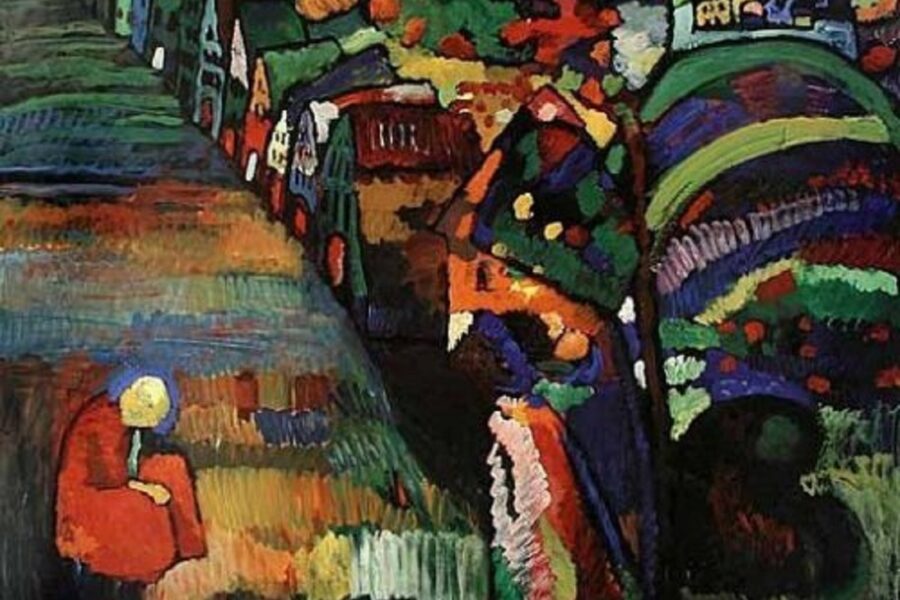February 25, 2024 (Updated February 26, 2024), by Claire Bommelaer – Excerpt
“STORY – First Day of Spring in Moret, an impressionist work, may have been on the list of looted goods, but it was acquired in 2008 by a Swiss gallery owner at Christie’s. Today, the great-great-grandson of the buyer, Alfred, is trying to get it back. But the negotiations are stalling.”
“Among the descendants of Alfred Lindon (1867-1948), we find the actor Vincent, the writer Mathieu, the publisher, Jérôme (now deceased), a French branch, a so-called American branch, a few elders and a host of young people. It is within this last generation that Justin stands, in his laid-back thirties. In the name of all the others, almost inhabited by a mission, he has set himself the goal of getting his hands on a painting by Sisley looted from his great-great-grandfather. “He took up this story with passion because he had a sensitivity to the fine arts, but above all because he felt it was the right thing to do,” testifies, with a touch of admiration, his grandmother Hélène, 87 years old.”
“In the hands of Hermann Göring”
“Alfred Lindon was born in Poland. He arrived in London as a penniless child, learned the trade of diamond dealer from a seasoned professional, and became, through hard work, an expert in precious stones. After his marriage to Fernande Citroën, André’s sister, he moved to Paris, and began to collect paintings and engravings. The apartment in the 16th arrondissement of Paris is adorned with Renoir, Degas, Manet, Vuillard, and the famous Sisley. At the debacle, the Lindons, who were Jewish, fled Paris and reached the United States. They thought of putting 64 of their most important paintings in a safe at the Chase Bank on rue Cambon in Paris. It was a wasted effort: in November 1940, the Germans seized the contents of the safe, then transported the paintings to the Jeu de Paume museum, where all the works of art looted from the Jews were stored. From exchange to exchange, we now know that part of Alfred Lindon’s collection came into the hands of Hermann Göring, and that it was shipped to Germany.”
“Unaware of the extent of the great scandal of the concealment of spoliation, Alfred Lindon was worried about the fate of his collection from New York. “I have a voluminous correspondence on this subject in a box,” says Hélène Mackenzie Peers. On their return to France, after the Liberation, the Lindons rushed to provide an accurate inventory of the thefts to the Commission for Artistic Recovery (CRA), which allowed them to find the bulk of their paintings, but not the Sisley. Then Alfred died in 1948. “His sons continued the search, and in the 1960s filed a compensation file with Germany,” says Justin MacKenzie Peers. The dust then settles, everyone thinking they have done their best to repair what could be repaired.”
“As is often the case in these stories of Nazi spoliation, the past will still resurface. In 2016, Denis Lindon, Alfred’s grandson, received a phone call from his cousins, who lived in the United States. Thanks to a Canadian painting research company, Mondex, the latter has just learned that the Sisley has been located at a Swiss gallery owner. In the aftermath, a complaint against X for “theft and concealment of theft” was filed. And the family, decades later, partially put the pieces back together. Once stolen by the Germans, the painting disappeared. It resurfaced in 1972, sold by the Wildenstein Gallery to a private collector. The latter offered it to the prestigious Christie’s auction house, which organized a sale dedicated to the Impressionists in New York in 2008. This is where Alain Dreyfus, a gallery owner in Basel who initially specialized in old stamps, leaves with the Sisley under his arm. The vagueness in the trajectory of the painting, especially around a period when the art market rhymed with looting and exactions, did not, at the time, alert anyone. Unless no one wanted to see?”
“The provenance published in the auction catalogue fifteen years ago was the one whose data were known at the time. It was only after the sale that new information about the provenance came to light. We recognise that the situation is complex and, although Christie’s is not involved in the current legal proceedings, we have experience and staff who specialise in restitutions. We are eager to facilitate the search for a mediation solution between the parties. We are in contact with them and have indicated our availability to help them if they wish. We will refrain from any further comment given the ongoing procedures,” a spokesperson told us, in an email where every word was obviously weighed with a trebuchet.”
This is an excerpt from this Le Figaro article. Full article through this link: https://www.lefigaro.fr/culture/l-incroyable-histoire-du-tableau-de-sisley-spolie-par-les-nazis-a-la-famille-lindon-20240224.


